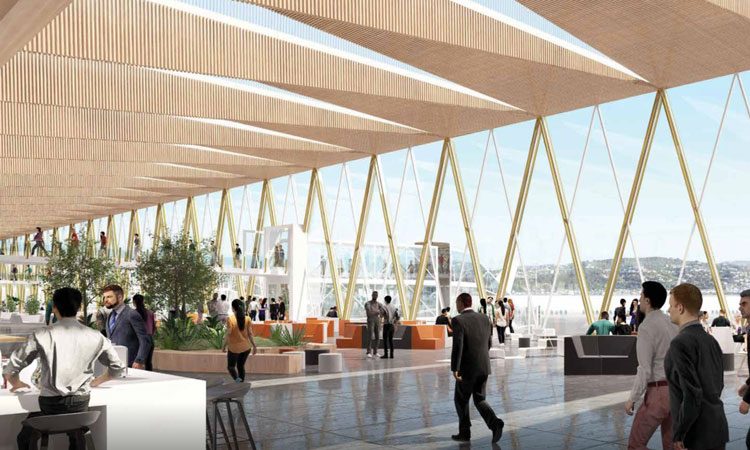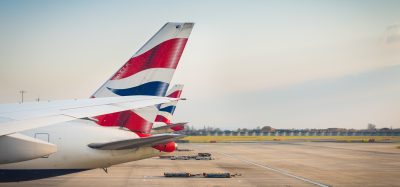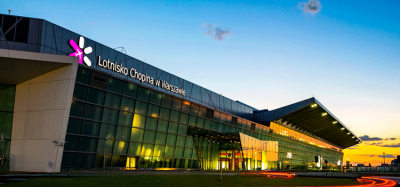Wellington Airport has revealed its 2040 masterplan
Posted: 23 October 2019 | Rachael Harper (International Airport Review) | No comments yet
Wellington Airport has released its plans for the next 20 years, which includes a terminal expansion and runway improvements.


Indicative render of the expanded terminal (credit: Wellington Airport).
A new masterplan has been released by Wellington Airport showing how it will accommodate future growth for the region over the next 20 years.
It includes a terminal expansion, runway and taxiway system improvements, new freight facilities, additional aircraft parking stands and a modern fire station. The plans also accommodate rapid transport from Wellington’s city centre.
Under the plans, a new multi-purpose domestic and international jet terminal would be constructed that will extend to the south of the existing terminal, with the surrounding car parking areas repurposed for jet aircraft.
Join us live: Shaping the Next Generation of Hold Baggage and Air Cargo Screening
Join us live for an insightful webinar on 11th December at 14:00 GMT, in collaboration with Smiths Detection, as we explore the strategic balance of operational efficiency, regulatory compliance, and sustainability in high-volume security environments.
This session offers a focused look into future-proofing your security strategy.
Key learning points
- Cost Reduction: Strategies to minimize bag travel time while simultaneously reducing operational costs.
- Regulatory Roadmap: Insights into the next wave of regulatory changes and their impact on future investment decisions.
- Sustainable Systems: Practical approaches to building sustainability into security systems and lowering the total cost of ownership (TCO).
- Scalable Solutions: Real-world examples of scalable systems supporting current airport growth and preparing for tomorrow.
Register now for expert insights, case studies, and actionable strategies on operational efficiency!
Meanwhile, the northern parts of the terminal will be converted for regional traffic – essentially ‘flipping’ the terminals around.
By 2040 the airport is expected to double its economic contribution to the region from $2.3 to $4.3 billion per year, facilitating more than 22,000 jobs.
Steve Sanderson, Chief Executive of Wellington Airport, said the masterplan shows how the airport will cater for a doubling in travellers from 6.4 million today to the 12 million that are expected to pass through every year by 2040.
“The recent terminal expansion has done well to keep pace with domestic growth but the international facilities are already facing congestion at peak times,” Sanderson said. “The forecast growth will mean demand will exceed existing capacity and we need additional land to accommodate the airport’s operations and the new generation of aircraft that are carrying increasing numbers of passengers more efficiently.”
As an international airport, Wellington has a small 110 hectare footprint compared to Auckland Airport’s 1,500 hectares and Christchurch’s 750 hectares, said Sanderson.
“This has made us one of the most efficient and innovative airports in the world – but it limits our options. Growth to the south and east is the most feasible option given the airport’s geographical constraints,” Sanderson continued. “Our growth will play a pivotal role in shaping Wellington’s future. This project also represents one of the largest investments in infrastructure in the region and will generate additional construction jobs and other opportunities for Wellingtonians.”
Domestic aviation contributes to about one per cent of New Zealand’s total carbon emissions. While Wellington’s passenger numbers are forecast to double in 20 years, likely commercial aircraft movements are forecast to increase by 25 per cent. However, the next generation aircraft are 20-30 per cent more efficient and Wellington Airport is targeting a 30 per cent reduction in its operational emissions by 2030.
“While the number of travellers are growing, there is a significant number of people moving between the eastern suburbs to the city centre and beyond,” Sanderson said. “We need a world-class 21st century multimodal transport solution which meets the needs of motorists and those choosing public transport. Wellington Airport will be ready to enable any public transport solution, but ideally it links directly to the city centre in order to provide the maximum benefit for current and future travellers.”
Stay Connected with International Airport Review — Subscribe for Free!
Get exclusive access to the latest airport and aviation industry insights from International Airport Review — tailored to your interests.
✅ Expert-Led Webinars – Gain insights from global aviation leaders
✅ Weekly News & Reports – Airport innovation, thought leadership, and industry trends
✅ Exclusive Industry Insights – Discover cutting-edge technologies shaping the future of air travel
✅ International Airport Summit – Join our flagship event to network with industry leaders and explore the latest advancements
Choose the updates that matter most to you.
Sign up now to stay informed, inspired, and connected — all for free!
Thank you for being part of our aviation community. Let’s keep shaping the future of airports together!
Related topics
Airport construction and design, Capacity, Economy, Passenger volumes, Runways and pavements


















